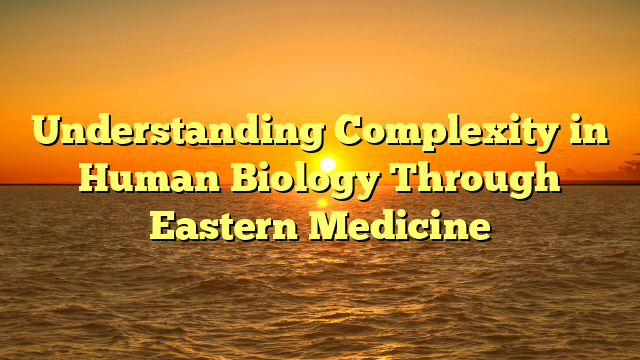The human body is complex. It is not merely a sum of its parts. The body’s behaviors, especially when it comes to healing from complex chronic conditions are not linear.
Linear reductionist models are favored by modern medicine. Each body part and organ system are broken down and have a specialist. Those specialists don’t take into account the web of connection to the whole body. You go to the GI doctor for stomach issues but they don’t take into account your immune system. You go to the thyroid doctor who doesn’t take into account your gut and immune system. You can see how this limits the therapeutic approach they can take. Modern reductionist medicine seeks to name a problem, blame that name for your problems and then prescribe a single (or multiple) prescription drugs for that problem. But what if the name of your problem isn’t your actual problem?
Eastern medicine, with its centuries-old framework, uniquely embraces this complexity, offering a perspective that illuminates the interconnectedness of biological systems and provides time-tested paths to restore balance.
Modern biomedicine often seeks to isolate problems and address them at their source, focusing on singular organs, pathways, or molecules. While this method has produced remarkable breakthroughs, it can sometimes miss the bigger picture—how systems interact, influence each other, and give rise to emergent behaviors. For example, treating inflammation as a local issue without addressing its systemic triggers can lead to temporary relief but rarely resolves the underlying causes.
Eastern medicine approaches the human body as an integrated whole. It views symptoms not as isolated phenomena but as signals of deeper imbalances in the body’s complex web of interactions. Rather than targeting one part in isolation, practitioners observe patterns across seemingly unrelated symptoms. This holistic approach provides insight into the broader dynamics at play, helping identify root causes and guiding interventions that work harmoniously across systems.
One of the key strengths of Eastern medicine is its ability to provide a roadmap for addressing these complexities. Through careful observation and pattern recognition, it has developed interventions that consider the body’s adaptive capacity. These interventions—ranging from physical manipulations to dietary adjustments—are not applied as static formulas but are tailored to each individual. This adaptive framework aligns with the reality that human health is not a static state but a dynamic process influenced by internal and external factors.
Moreover, Eastern medicine’s centuries of trial and error have created a repository of strategies that address long-term health maintenance. Modern research increasingly validates many of these practices, revealing their capacity to modulate inflammation, enhance circulation, and support systemic resilience. The fact that these interventions often lack serious side effects is a testament to their compatibility with the body’s natural processes.
Taleb’s view of complex systems also highlights the unpredictability of outcomes. Eastern medicine acknowledges this by focusing on nurturing the body’s innate ability to adapt and heal, rather than seeking to impose rigid control. Healing, in this framework, is a journey that unfolds in response to the body’s unique dynamics, with the practitioner serving as a guide rather than a dictator of outcomes.
Ultimately, Eastern medicine offers a profound respect for the complexity of human biology, recognizing that true health arises from the synergy of systems, not from the isolated optimization of their parts. By aligning its principles with the emergent behaviors of complex systems, it provides both insight and practical tools to navigate the intricate dance of human health—a dance no single component can lead alone.


